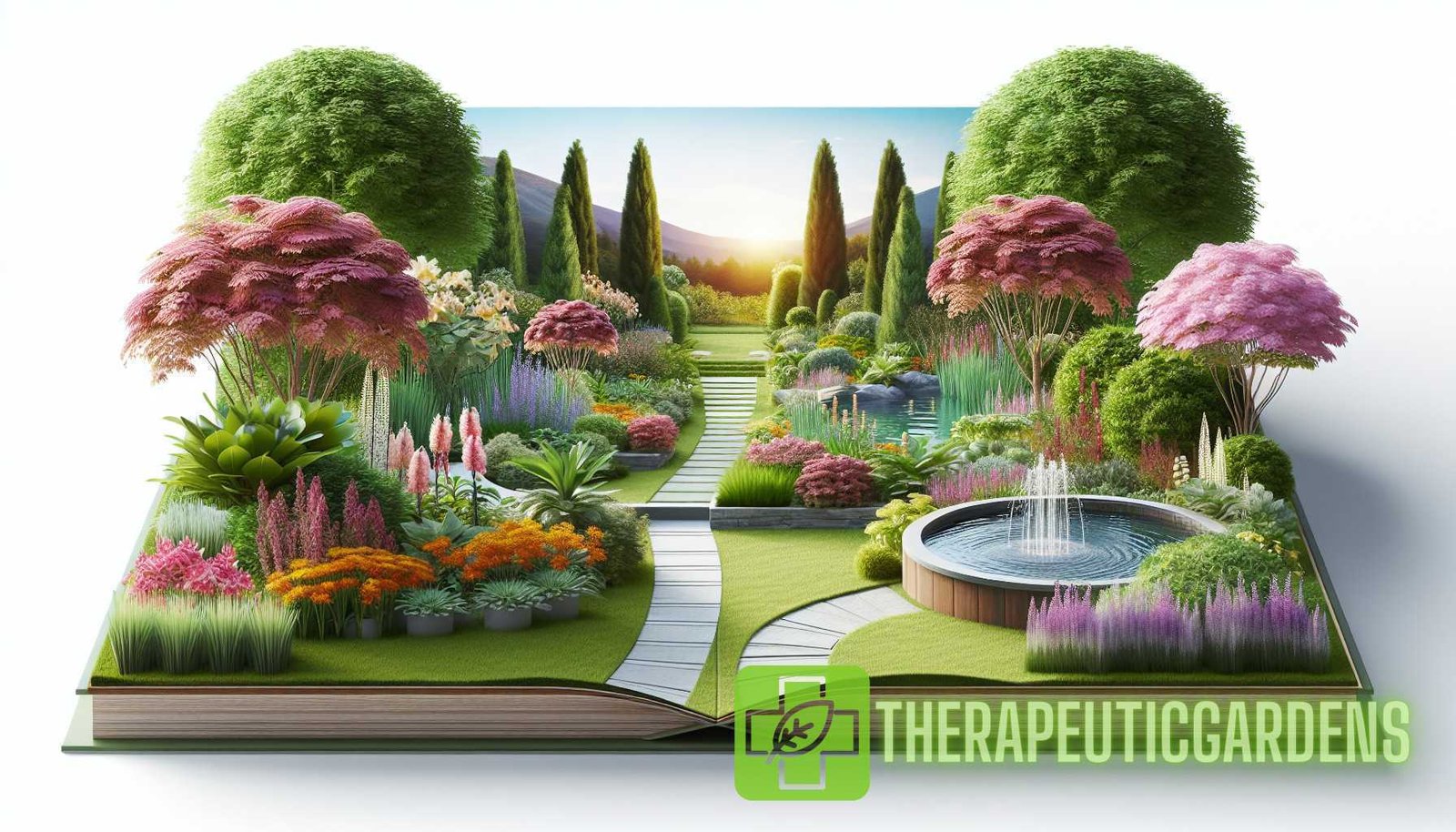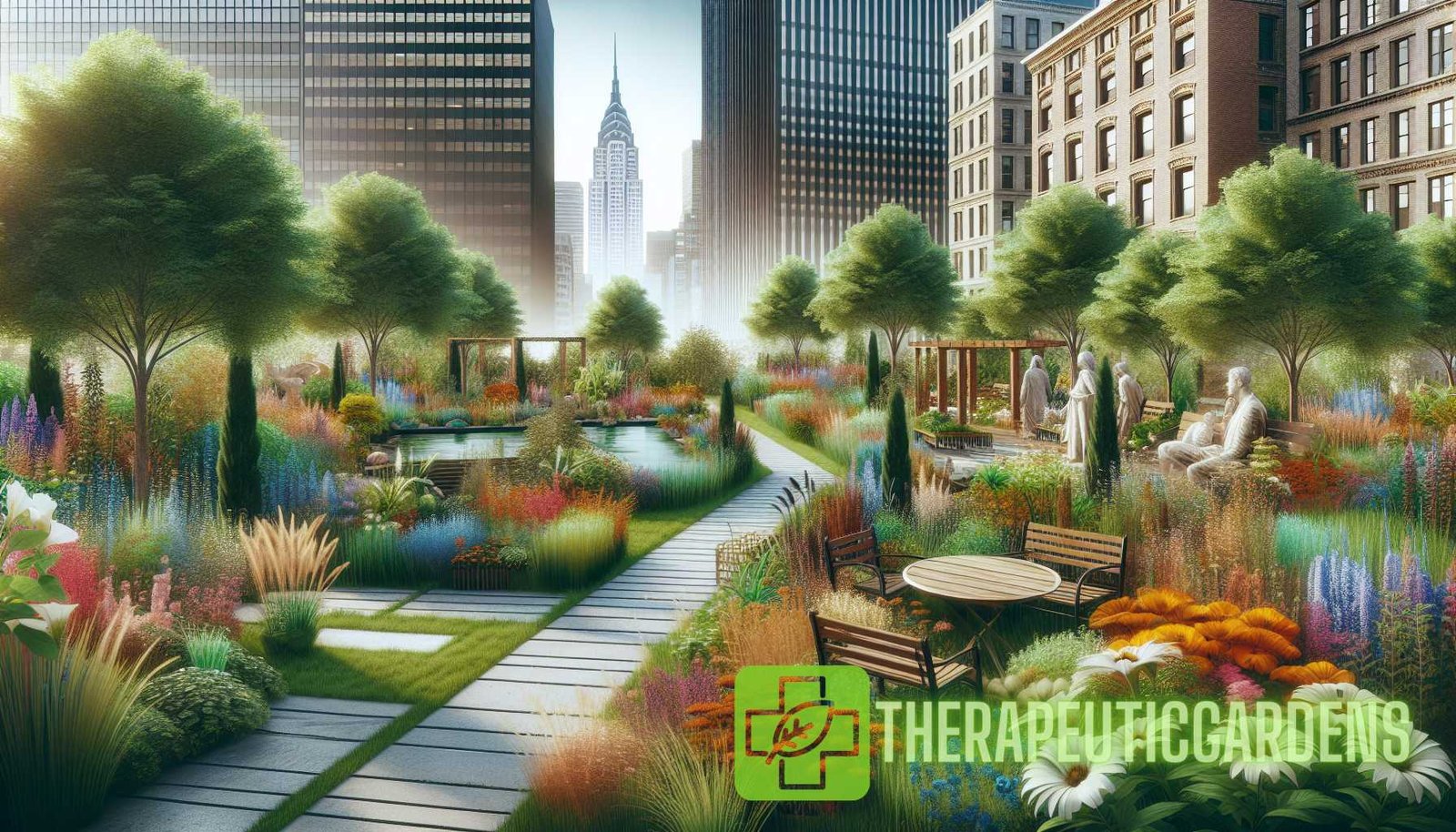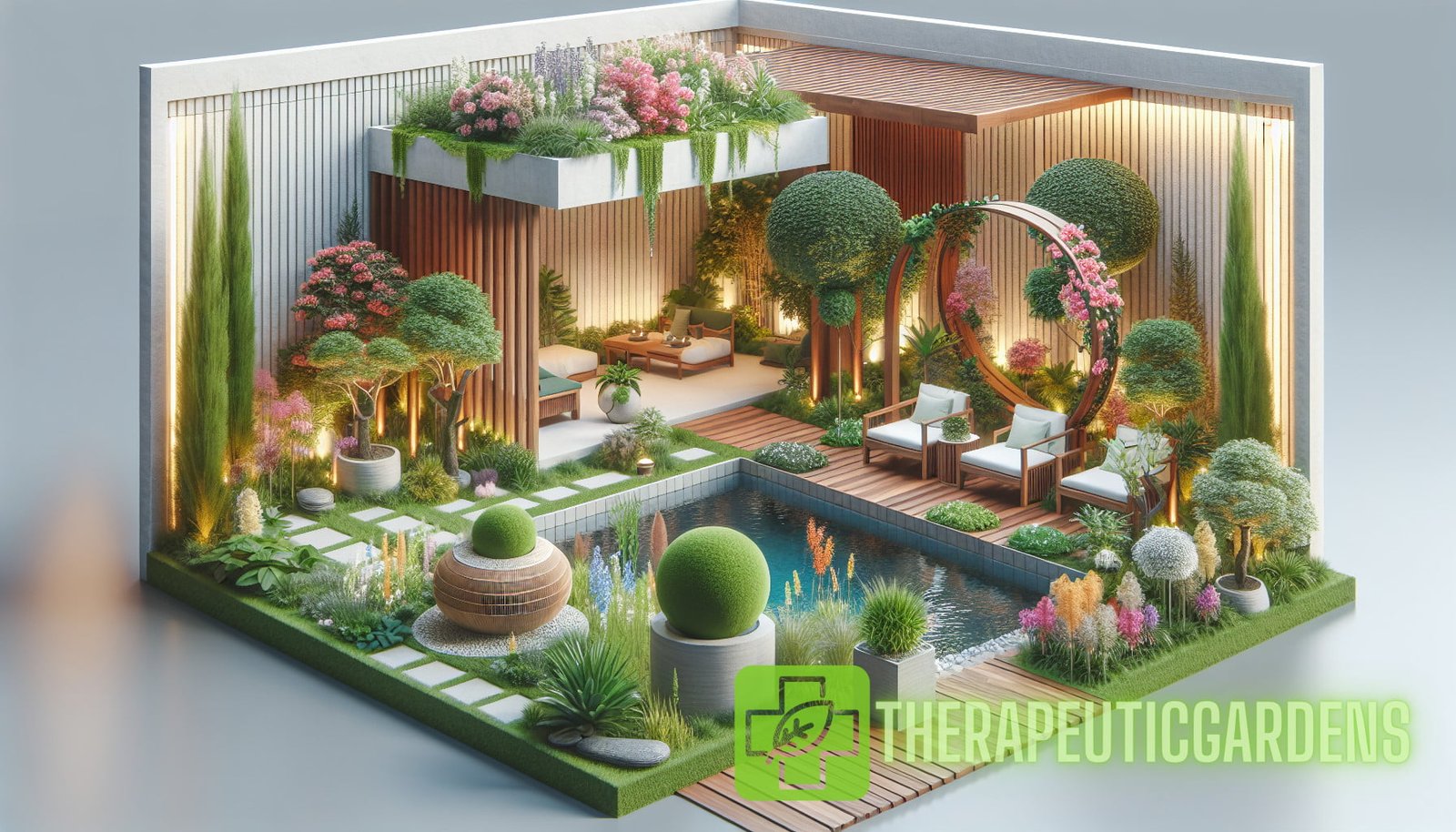Introduction
Therapeutic gardens are designed spaces that promote physical, mental, and emotional well-being. With carefully chosen plantings, layout, and features, these gardens create a soothing and restorative environment that can provide therapeutic benefits for individuals experiencing various health conditions. In this guide, we will explore the principles and inspiration behind designing therapeutic gardens. From understanding the needs of different users to incorporating sensory elements, we will delve into the key considerations for creating these healing spaces. Whether you are a professional garden designer or someone interested in creating a therapeutic garden for personal use, this guide will provide you with valuable insights and ideas to design a nurturing and transformative outdoor space.
Understanding the Benefits of Therapeutic Gardens
Therapeutic gardens offer a range of benefits for individuals with physical, mental, or emotional health conditions. Understanding these benefits is crucial for designing a garden that effectively addresses the needs of its users. Some of the key benefits of therapeutic gardens include:
- Reduced stress and anxiety: Nature has a calming effect on our minds, and spending time in a therapeutic garden can help reduce stress and anxiety.
- Improved physical health: Engaging in gardening activities can promote physical activity and improve overall well-being. It can also aid in rehabilitation and recovery from physical injuries or illnesses.
- Enhanced mental clarity: The restorative power of nature can help improve focus, concentration, and cognitive abilities.
- Increased social interaction: Therapeutic gardens can serve as communal spaces where individuals can interact with others, fostering a sense of community and connection.
- Promotion of healing and recovery: Immersion in a healing garden can speed up the recovery process and enhance the healing of both the body and mind.
- Improved mood and emotional well-being: Being surrounded by beautiful plants and engaging with nature can uplift moods and promote emotional well-being.
Design Principles for Therapeutic Gardens
A well-designed therapeutic garden incorporates specific principles that ensure its effectiveness in promoting healing and well-being. By following these principles, garden designers can create spaces that are inclusive, accessible, and nurturing. Here are some of the key design principles to consider:
Inclusive Design
Therapeutic gardens should be designed to cater to the diverse needs of their users. Consider the following aspects of inclusive design:
- Accessibility: Ensure that the garden is accessible to individuals with mobility challenges or disabilities, with features such as wheelchair ramps, smooth pathways, and handrails where necessary.
- Provision for various age groups: Consider the needs of different age groups, from children to elderly individuals, and incorporate elements that cater to their specific requirements.
- Creating a sensory experience: Design the garden to engage multiple senses, including sight, smell, touch, and sound. Incorporate a variety of textures, fragrances, and sounds to stimulate sensory experiences.
Therapeutic Landscaping

Therapeutic landscaping involves using plants and natural elements strategically to create a healing environment. Consider the following principles when designing the landscape:
- Plant selection: Choose plants that are visually appealing, have soothing colors, and offer sensory stimulation through fragrance and texture. Incorporate a variety of plants to create a rich and diverse landscape.
- Creating restorative environments: Design different areas within the garden that cater to different needs, such as secluded spots for quiet reflection, open areas for social interaction, or spaces for physical activities.
- Encourage engagement: Incorporate features like seating areas, walking paths, or interactive installations that encourage users to engage with the garden and its elements.
- Seasonal interest: Select plants that offer interest throughout the year, with seasonal flowers, changing foliage colors, and textural variations.
Sensory Design and Therapy
The sensory aspect of therapeutic gardens plays a vital role in creating a restful and immersive experience. Consider the following sensory design principles:
- Visual stimulation: Use plants with vibrant colors and interesting forms to create visually engaging spaces. Incorporate seasonal blooms and colorful foliage for year-round interest.
- Fragrance: Choose plants with fragrant flowers or foliage to fill the air with pleasing scents. Consider the time of day when designing for fragrance, as certain plants release stronger scents at specific times.
- Texture: Introduce plants with a variety of textures, such as soft foliage, rough bark, or delicate flowers, to provide tactile stimulation.
- Sound: Incorporate elements like wind chimes, water features, or rustling grasses to create a soothing soundscape and mask unwanted noise.
Therapeutic Features and Activities
In addition to the overall design principles, specific features and activities can enhance the therapeutic nature of a garden. Consider incorporating the following elements:
- Water features: The sound of flowing water, such as fountains or gently bubbling streams, can have a calming effect and promote relaxation.
- Seating areas: Provide comfortable and strategically placed seating options to encourage users to rest and engage with the garden.
- Art installations: Install sculptures, murals, or other forms of art to create points of interest and contemplation within the garden.
- Gardening activities: Encourage users to engage in therapeutic gardening activities like planting, weeding, and harvesting, which can provide a sense of accomplishment and purpose.
- Reflective spaces: Design secluded areas or designated spots for quiet reflection, meditation, or prayer.
Inspiration for Designing Therapeutic Gardens
Finding inspiration for designing a therapeutic garden can be challenging. However, there are many resources available to help gardeners and designers gather ideas. Here are a few sources of inspiration to consider:
Research and Case Studies
Numerous research studies and case studies have been conducted on the design and effectiveness of therapeutic gardens. These resources can provide valuable insights into successful designs and elements that promote healing. Accessible resources include:

- “The Transformative Power of Therapeutic Gardens: A Guide to Inspirational Principles”
- “Transform Small Spaces into Urban Oasis: Therapeutic Garden Ideas for Urban Dwellers”
Visiting Existing Therapeutic Gardens
Visiting established therapeutic gardens can provide firsthand experience and inspiration. Many hospitals, healthcare facilities, and botanical gardens have dedicated therapeutic garden spaces that are open to the public. Exploring these gardens can give you ideas for design elements, plant selections, and the overall ambiance of a healing garden.
Collaboration with Experts
Consulting with experts in the field of therapeutic garden design, such as landscape architects, horticulturists, or healthcare professionals, can provide valuable insights and guidance. Their expertise can help ensure that your garden design incorporates evidence-based principles and meets the needs of its users.
Online Resources and Publications
Numerous online resources, publications, and professional organizations focus on therapeutic garden design. Websites, blogs, and magazines dedicated to garden design and horticulture often feature articles and case studies on therapeutic gardens. These resources can provide inspiration, design tips, and access to a broader community of individuals interested in therapeutic gardens.
Conclusion
Designing therapeutic gardens involves considering the specific needs of the users, incorporating inclusive and accessible design principles, and creating a sensory and restorative environment. By following these guidelines and finding inspiration from research, existing gardens, and experts in the field, you can create a therapeutic garden that offers a transformative and healing experience for its users. Remember to tailor your garden design to the unique characteristics of the space and the individuals who will benefit from it. With careful consideration and meticulous planning, you can create a therapeutic garden that provides solace, promotes well-being, and connects individuals with the healing power of nature.
References
Wikipedia contributors. (2021, July 22). Garden design. In Wikipedia, The Free Encyclopedia.URL: https://en.wikipedia.org/wiki/Garden_design


